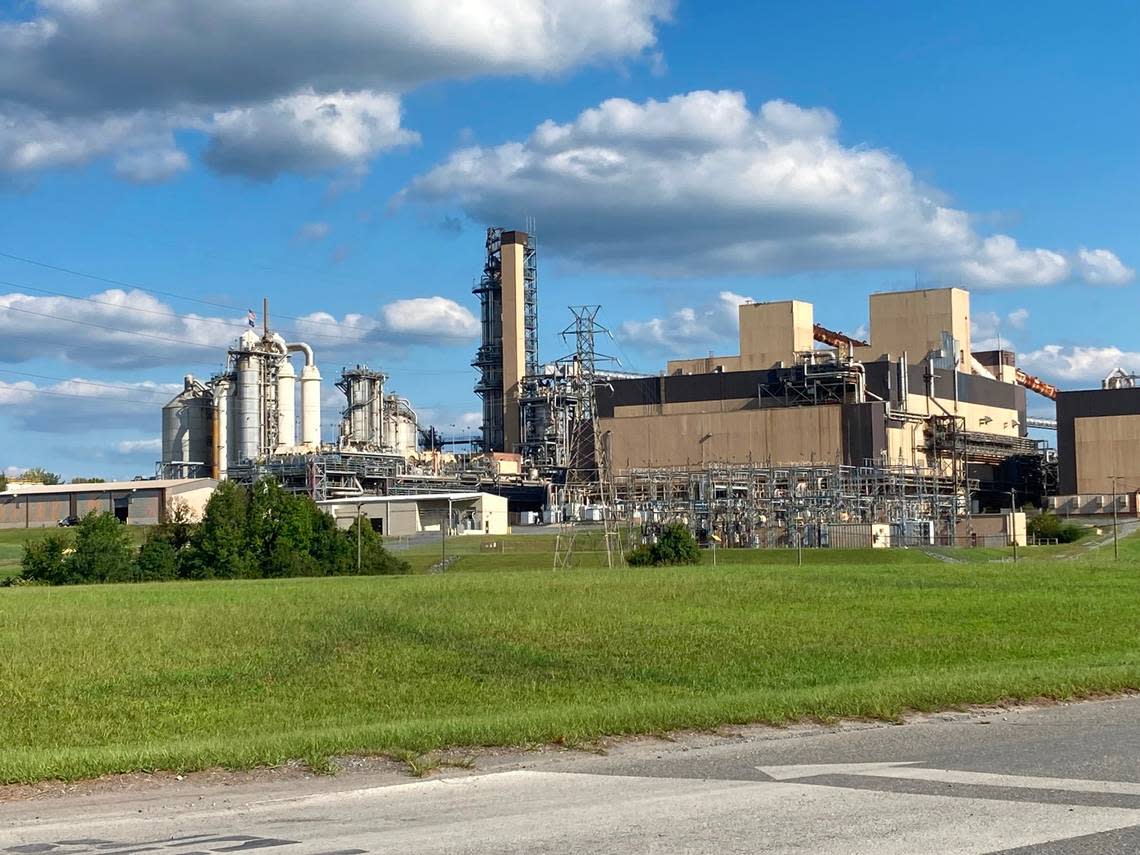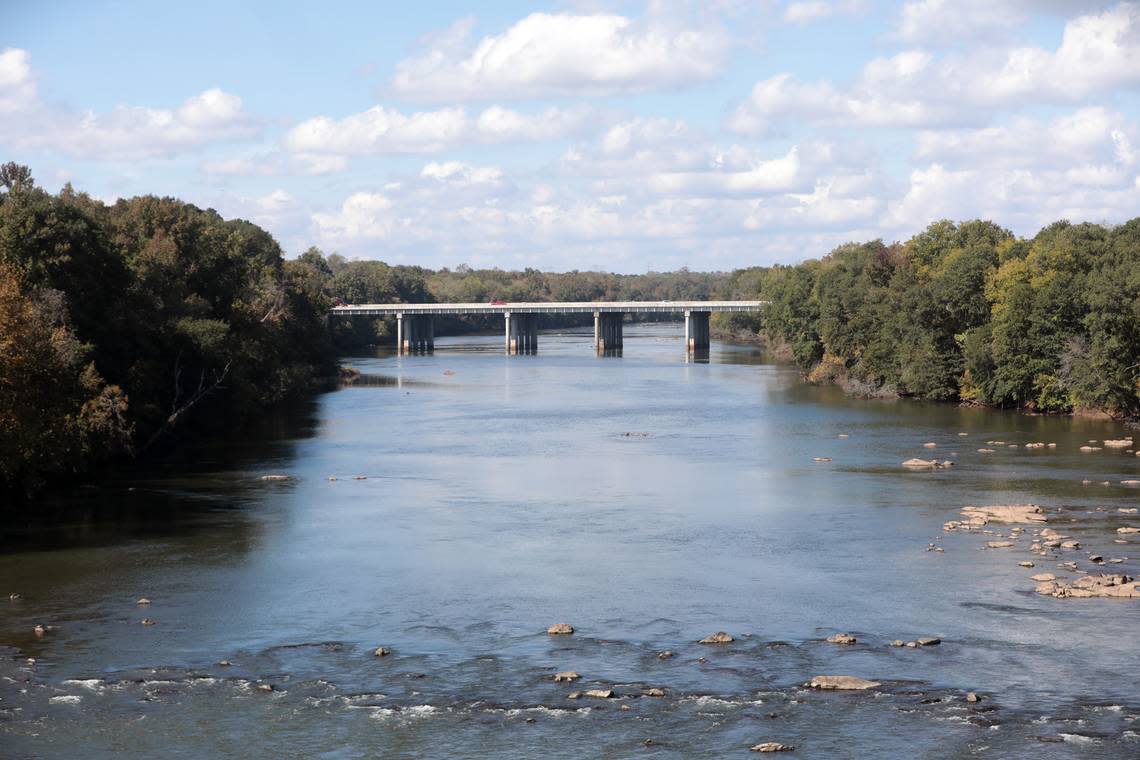Cancer-causing pollution seeping from paper mill to Catawba River, reports show
A legal team suing the troubled New-Indy paper mill in South Carolina says it has uncovered evidence that dioxin, a cancer-causing material, is seeping into the Catawba River from the more than 60-year-old industrial site south of Charlotte.
In an Oct. 20 letter to New-Indy, lawyers said up to 100 million gallons of groundwater containing dioxin and other pollutants are being discharged to the Catawba every year from the site.
The findings outlined by the legal team are the strongest indication to date that dioxin associated with the paper mill may have reached the Catawba, a popular recreational river that provides drinking water to tens of thousands of people between Columbia and Rock Hill.
The letter’s assertions are based on multiple consulting reports, most notably a 2022 study for the legal group that says polluted groundwater from the New-Indy property is moving toward the river.
Near the river, tests show that groundwater and soil are contaminated with dioxin, according to the 2022 study by consulting hydrogeologist Harvey Cohen. The contaminated soil is next to areas where seepage toward the river is occurring, the report said.
In addition, tests conducted along the bank of the Catawba River next to three New-Indy waste ponds indicate that dioxin and another pollutant, cobalt, were higher than at locations tested upriver, away from the New-Indy plant.
“It is probable that toxic and hazardous substances and pollutants are being transported from the facility to the Catawba River,’’ according to Cohen’s consulting report. “Of particular note is the presence of dioxins and furans, compounds with high toxicity, that have been observed in both groundwater near the river, and in soils adjacent to seeps discharging toward the river.’’
South Carolina regulators said they are reviewing the information in Cohen’s report, but at this point, they still have no indication that dioxin has gotten into the Catawba River. They have said previously they were not aware of dioxin contamination between New-Indy’s waste lagoons and the river.
Dioxin is one of the world’s most toxic chemicals. Certain forms of it can cause cancer in people who are exposed, and is of particular concern because it doesn’t break down easily in the environment. Dioxin, which can pollute fish people eat, has been linked to the deaths of domestic animals and illnesses in children.
The Oct. 20 letter, sent by the Motley Rice law firm and five other attorneys’ offices, was written on behalf of six area residents, including former state Rep. Mandy Powers Norrell, D-Lancaster. The S.C. Department of Health and Environmental Control, the U.S. Environmental Protection Agency and Gov. Henry McMaster were among those copied on the letter to New-Indy.
It accuses New-Indy of violating the nation’s Clean Water Act and the U.S. hazardous waste law, commonly referred to as RCRA — and the letter threatens lawsuits over the alleged violations. The water pollution violations center on contaminated groundwater leaking into the Catawba, which makes for an illegal discharge, the letter said.

The legal team, which also includes the Baird Mandalas Brockstedt Federico & Cardea law firm of Delaware, has previously sued New-Indy over odors that the plant generated after it switched from making bleached paper to unbleached containerboard about two years ago.
Residents registered nearly 50,000 odor complaints with DHEC after the switch was made. The odor suit is seeking class action status, which could provide payments to thousands of people if successful.
New-Indy, which acquired the former Bowater paper mill about four years ago, declined comment Tuesday. But in a Sept. 20 email to The State, the company said it had not found that dioxin was leaving the paper mill site and “we do not expect this to happen.’’
Late Wednesday, more than a day after declining to comment on the Oct. 20 letter, the company issued a statement saying “no hazardous level of dioxin was detected’’ in any of the plant’s monitoring wells. The company said reports that dioxin is draining into the river are “baseless.”
New-Indy, a national corporation owned in part by New England Patriots’ owner Robert Kraft, has said it does its best to follow environmental laws and is working to make improvements. The company has conducted tours of the site and held meetings with local residents to hear their concerns, officials have said.
Powers Norrell, however, said DHEC should have been more aggressive at overseeing New-Indy’s operations.
The plant ran into recent problems after it switched processes and cut out key pollution control equipment, with DHEC’s approval. DHEC should have been “just immediately getting on it when the citizens started to complain,’’ she said.
DHEC has previously fined New-Indy nearly $130,000 for environmental violations, and the agency’s top official said New-Indy misled DHEC about changes it was making at the plant.
In a statement Tuesday, DHEC said it knows that dioxin has been found in sludge in the wastewater basins, but not elsewhere.
Dioxin also has been found in “very low concentrations’’ in groundwater at some monitoring wells on the site, but the levels are not above safe drinking water standards, the agency said in a statement Tuesday afternoon. The agency also said dioxin doesn’t dissolve well in water, but instead tends to cling to sediment.
Regardless, the matter needs close attention, said Powers Norrell, who ran for lieutenant governor in 2018. Dioxin and other pollution in the Catawba River are concerns for people who kayak there, she said. Kayak trips often take her to places where rare rocky shoals spider lilies bloom, she said.
“This is a big concern because I love the Catawba River,’’ she said. “It is my favorite part about living where I live, that we have this tiny slice of heaven when you are out there and you are paddling.’’
The Catawba is one of the Carolinas’ more visible rivers. It begins in the mountains above Charlotte, crosses into South Carolina and runs about 75 miles from the border to Lake Wateree north of Columbia. Below the lake, the Catawba becomes the Wateree River.

It provides drinking water for the Chester Metropolitan District and the Catawba River Water Supply Project, which has an intake across from the New-Indy plant, records show. The river also runs past the Catawba Indian reservation not far from New-Indy.
Dioxin, sometimes referred to as dioxins, is part of a class of compounds that have been created through the years by industrial processes.
Paper mills that bleach paper are among those that have released dioxin, The State reported earlier this year. Along the South Carolina coast, people eating fish from a river near Georgetown had the nation’s highest cancer risk from dioxin at one point more than 30 years ago, the U.S Environmental Protection Agency has reported. Lower cancer risks were calculated for the Bowater plant, The State reported in 1990.
New-Indy, in its Sept. 20 email to The State, said dioxin likely was introduced at its paper mill site long before the company acquired the property. Several companies have owned the plant, including Bowater, which ran the paper mill for decades.
The mill no longer uses a process that generates dioxin, but past problems linger, the statement said. The company’s statement said a prior owner “did nothing to identify the extent of the dioxin issue or develop plans to address it.’’ The statement did not name the previous owner.
“New-Indy has spent a considerable amount of time locating and characterizing the dioxin,’’ the statement said. “New-Indy continues to work with DHEC to define the scope of the historical issue and to identify the best manner to contain it in perpetuity.’’
Dioxin isn’t the only pollutant that has shown up in groundwater that threatens the Catawba River. Other contaminants include lead, benzene and trichlorethene, all of which are hazardous to human health, according to the attorneys’ Oct. 20 letter to New-Indy.
The pollutants also include cobalt, a metal often associated with nuclear facilities. It was not known this week why cobalt has shown up at the New-Indy site. Certain forms of the silvery gray metal can increase cancer risks in people exposed to high enough amounts, according to the U.S. Environmental Protection Agency.
In addition to the Motley Rice and Baird Mandalas law firms, others representing people against New-Indy are the Harpootlian, Stavrinakis, Pope and Mauney law firms.
This story has been updated with comments made Wednesday from New-Indy

